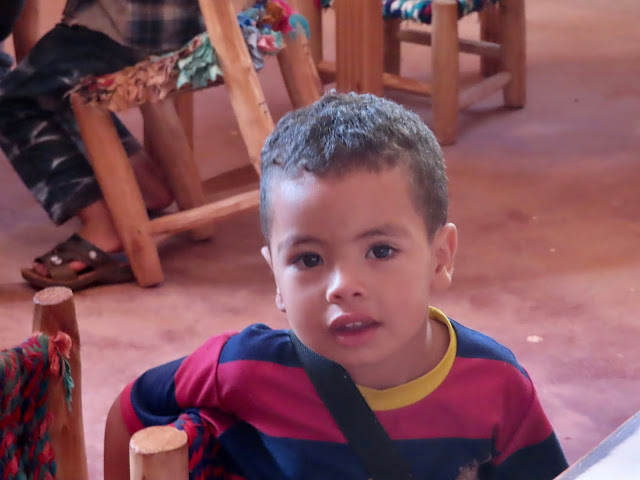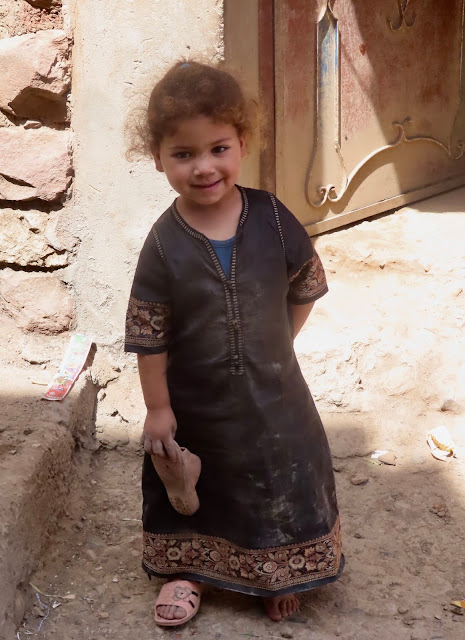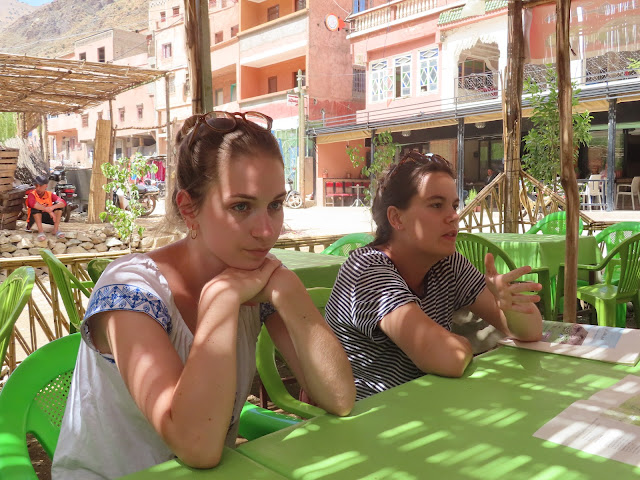Even if you can't feel the heat in an air-conditioned car, looking out the window and seeing free-ranging camels might be a clue that you're on a desert. The sand and desolation might hint desert too.
Lest there be any doubt left that you are not in the rain forest, this mud-caked haystack might tip the scales. That mud is intended to keep the hay semi-protected from the sun.
We accompanied our friend Mo to a well project spear-headed by a group from Columbia University--"Engineers Without Borders". The pictures speak for themselves. What looks like a big old piece of 5 inch foam is water.
Here we are looking all "projecty" even though we just basically showed up for a photo shoot. We DID, however, learn much and will go with questions and ideas to our supervisory team and hopefully, bring some water somewhere!
At least the dog has someplace to cool his butt.
These boys have a 2 hour roundtrip to get water.
I loved the baby donkey cuddled up to part of the waterworks.
Mo--in his Ute hat and Rotary International golf shirt, nevertheless a hero no matter how he's dressed
The water pipe yet to be connected
I can't take too many steps before I have to point and shoot a donkey. This owner very tenderly flicked some mud off this little baby's back.
Way off across the way, I saw this woman standing in her doorway. I waved at her and then made my way over to "call on her". We embraced traditionally, and then she showed me around her simple multi-roomed house.
She was particularly proud of her gardens--made possible now by a well just a short walk away.
I am so taken with these woven baskets. This one appeared later full of bread as we were
served tea and cookies in this room. I looked around for my new friend, but she remained behind the scenes.

Extending the pipeline--Note the hatted dude, John, to the left of Jerry. He was in charge--Columbia philosophy degree and all.
Please forgive my belated response. Our team has been swamped with finishing the project and returning to school in New York. It was a pleasure having you both out at the site in Ilguiloda. Below is a summary of our progress:
During the summer of 2019, Engineers Without Borders at Columbia University successfully delivered running water to the village of Ilguiloda. We laid four kilometers of polyethylene pipeline, constructed a 38,000-liter reinforced concrete water tank, and built a steel-framed 5000-watt solar array. Members of the community volunteered their labor and were present during every aspect of the project construction. They have taken it upon themselves to maintain the system, and have already carried out repairs which we were unable to address during our limited time in Morocco. We remain in contact with the community members and our three local translators via WhatsApp. The system now services 140 permanent residents of Ilguiloda and 30 living in the compounds surrounding the well.
For the next phase of the project, we will extend the pipeline an additional three kilometers to the village of Izgouaren, population 370. In addition to excavating and laying the pipeline, this project will involve constructing a concrete pressure-break tank, additional spigots, and a second solar array. This implementation will take place in the summer of 2020. More details about the project and anticipated costs will follow in the coming weeks. In the mean time, please let us know if you have any questions.
Thank you for you interest in the project. I look forward to discussing ways in which our organizations can collaborate to continue liquifying Morocco.
Regards,
John Yatsko
Design Lead
Engineers Without Borders
Columbia University

This village was very invested in the project for obvious reasons. They showed up every day (including a holiday) to work. This kid is applying some sort of solvent to the pipe before it is joined together.

Joining the
lines--they melt the ends and then press them together tightly.






















































